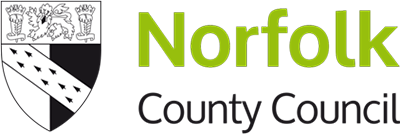Post 3 Will Teather – Revisiting the paintings of Strangers’ Hall
“Here are two more works in progress from my locked down studio, based upon a pair of portraits that hang in the Georgian Dining Room of Strangers’ Hall Museum in Norwich.
Once the pandemic is in retreat, these versions will join their doppelgängers at Stranger’s Hall, for an exhibition of fractal reinterpretations of their collection. I have yet to check the colours of these against the original paintings, as the museum is currently closed, and there are also a series of 18th Century style glazes to come which will add depth to the final images.
In these reinterpretations I have designed a series of overlapping patterns to abstract the image. The intention was to emphasise points of focus within the original paintings, such as the eyes and the angular corsets. This reflects both theories of seeing and composition. People tend to see faces in far more clarity than their surroundings, a whole part of our mind is dedicated to understanding the human countenance. In ‘The Power of The Centre,’ art historian Rudolph Arnheim also argues that compositions are based around a centre or number of centre’s of energy, which the viewer finds itself drawn to. The way these are organised guides the aesthetic and narrative qualities of an image.”


Cathy Terry, Senior Curator of Social History for Norfolk Museums Service, sheds some light on the history of the artworks that inspired these new paintings:
Anne Batcheler and Margaret Tryon
These two portraits hang next to each other in the elegant Georgian Dining Room at Strangers’ Hall. The two women are cousins – and the painting are remarkably similar in style so we are tempted to wonder if they are by the same artist, although they came into the collections by different routes. As a regional and cultural centre, Norwich attracted a number of itinerant artists in the 18th century, and they catered for a growing demand not only from wealthy Norfolk county set, but also they painted members of urban elite and some undertook civic portraiture. One example is John Sanders (1750 – 1825) who on his arrival in Norwich in 1777 advertised his London training and base as vital credentials. Other portraitists, English, American and continental spent time in Norwich as well as other fashionable cities. At this time, a portrait painter must be socially acceptable – as Jonathan Richardson remarks ‘ A portrait painter must understand mankind, must enter into their characters and express their minds as well as their faces: and as his business is chiefly with people of condition, he must think as a gentleman, and a man of sense, or it will be impossible, to give such their true, and proper resemblences’.
The family is one of the most enduring themes of British portraiture. Elizabeth and Anne were both descended from the Elwin family of Booton Hall, and connected by social networks and family ties to other prominent north Norfolk families living in the area around Thurning and Horstead. The commissioning of portraits to hang in the family seat was one of the most visible ways of showing the importance of lineage and family connections in the 18th century. Informal family groups or ‘conversation pieces’, individuals depicted in a landscape setting, displaying lands and property, the use of classical imagery and allusions, and realistic portrayal of single individuals were all popular styles. In the mid 18th century facial features are portrayed in a more naturalistic manner than previously and the prevailing idea of feminine beauty typically features a restrained gracious bearing, flowing silk drapery, with hair drawn back from the face to give prominence to the facial features. Both Anne Batcheler and Margaret wear low-necked grey silk gowns with elegant folds with low pointed stomachers, and are swathed in blue velvet wraps. Despite the similarities, it’s likely however, that the two cousins led very different lives. Very little is known about Anne Batcheler, whilst her cousin Elizabeth Wake Tryon features much more prominently in the historical record. Anne married a local landowner, but Margaret, as well as having Norfolk connections, was the daughter and wife of members of the British colonial administration, and by all reports, a tour de force in her own right.


Acknowledgement : The information above has been adapted from the following source:
Wikipedia, article on Tryon Palace.
Tryon Palace Web-site https://www.tryonpalace.org/
B.D Bargar, ‘Governor Tryon’s House in Fort George, New York, New York History XXXV, No 3, July 1954 pps 300 – 30-9.
Trevor Nicholls, ‘Margaret Tryon c 1732 – 1819, Journal of the Great Yarmouth Archaeology and Local History Society, forthcoming November 2020.
Thanks are also due to the following; Kayla Leonard, Registrar, Lindy Cummings, Research Historian, Tryon Palace, New Bern, North Carolina, USA. Trevor Nicholls for kind permission to use his forthcoming article.
Cathy Terry
15 April 2020.
Supported by Arts Council England, Norfolk Arts Service and Norwich Arts Centre.
About Will Teather
Will Teather’s work has been exhibited internationally to acclaim, with recent exhibitions including New York’s RJD Gallery, Artwars at Red Dot Miami and as a finalist in the London Contemporary Art Prize. His studio is based in Norwich, where he is the Artist-in-Residence for Norwich Arts Centre, following on from previous residencies with venues in New York and Aberdeen.
Further Information
Will Teather – www.willteather.com









